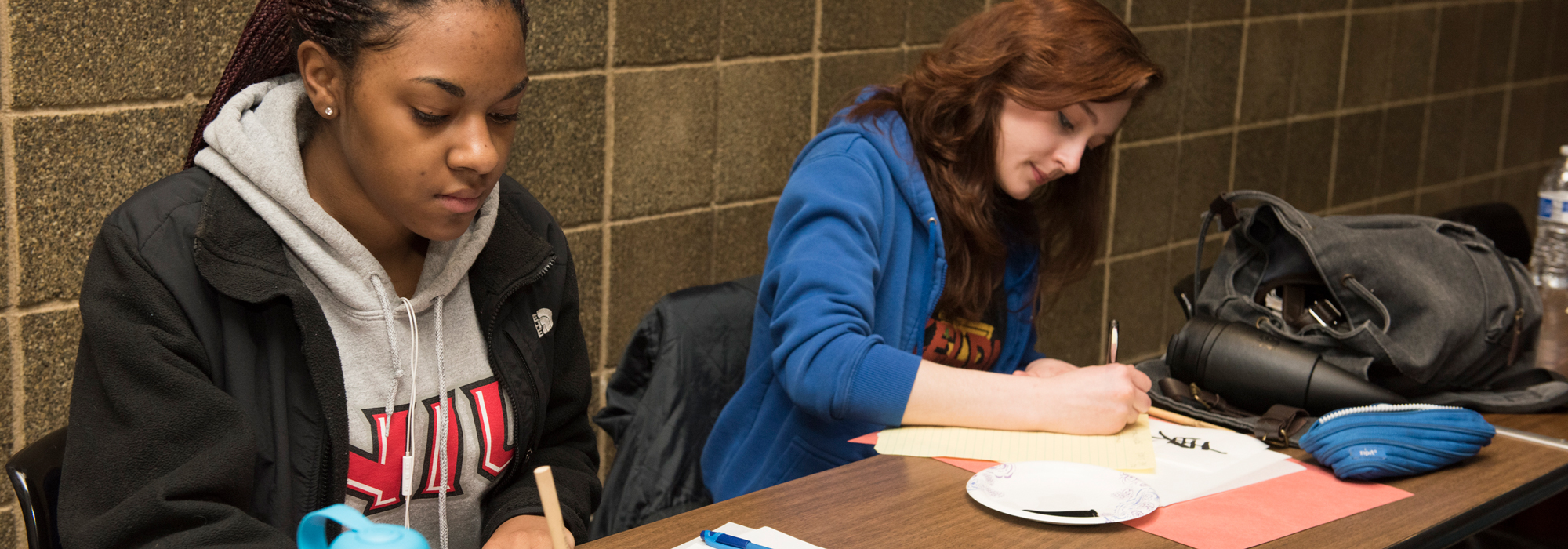Incoming Art and Design Students
This scholarship is not available for re-entering students. Applications will be due Monday, Feb. 2, 2026. You must submit your application through the MyScholarships portal. Complete the application and upload a single PDF document containing:
- 10 pieces of your best work. You can include one additional detailed image of each piece.
- Each piece must be labeled underneath with title, size, media and year.
- Digital work like animation, video, etc. should include a link to your work.
- For art history majors please include a single pdf document with two research-based writings.
Application Guidelines
Scholarships are only applied to tuition. Recipients are responsible for any balance of tuition and all assessed fees. If an awarded student meets the requirements below, they may be eligible to hold this scholarship for a maximum of two years, subject to available funds. Scholarship benefits may not be applied to tuition for summer terms.
In order to receive and maintain this scholarship, a recipient must enroll in and complete a minimum of 12 credit hours per semester, including courses appropriate to the art major and selected emphasis each semester, and meet the following criteria:
- Must apply and be accepted to NIU, based on meeting or surpassing the minimum admission criteria as published in NIU's Undergraduate Catalog.
- Maintain a minimum 2.0 overall GPA in all NIU courses.
- Maintain a minimum 3.0 overall GPA in art courses.
Scholarship Awards
Scholarship award notifications will be sent via email and will appear in the MyScholarship system 3-4 weeks after the application closes. We encourage students to check the MyScholarship system and their email to accept their award.
Current Art and Design Students
The School of Art and Design offers multiple scholarships for current students based on a portfolio of your work. Your application will require a single PDF document with five examples of your best work. This is not open to re-entering or transfer students. The deadline is March 16, 2026.
Requirements
- Five pieces of your best work. You can include one additional detailed image of each piece.
- Each piece must be labeled underneath with title, size, media and year.
- Digital work like animation, video, etc. should include a link to your work.
- For art history and art education majors please include a single PDF document with examples of research-based writings. Art Education majors can include artwork and research writings in their submissions.
Scholarship Awards
Scholarship award notifications will be sent via email and will appear in the MyScholarship system 3-4 weeks after the application closes. We encourage students to check the
MyScholarship system and their email to accept their award.
Info Sessions
Information sessions will be held via Zoom. Registration will open August 2025.
- Wednesday, December 10, 5:30 p.m. to 6:30 p.m.
- Wednesday, January 7, 5:30 p.m. to 6:30 p.m.
